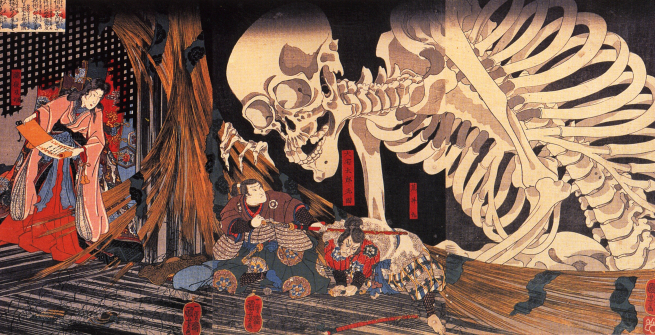In the hottest part of the summer in Japan, there is an old tradition of gathering a group of people into a large hall to share ghost stories. A hundred candles or lanterns light the hall, and a flame is blown out after each ghost story is finished. Story by story, the spirits are summoned, and the room grows darker. Only the most courageous listeners will remain to brave the final tale before the last candle goes out and the room is plunged into blackness.
Ghosts come out to socialize at Halloween in England and America, but in China, Japan, and other Asian countries, the time for ghosts is summertime. Every year on the 15th day of the seventh lunar month, Chinese-speaking countries celebrate the Hungry Ghost Festival (Yulanpen in the Buddhist tradition, Zhongyuan in Taoism). Around the same time, Japan celebrates Obon or Bon, the Buddhist commemoration of the dead. This year the Hungry Ghost Festival falls on August 30, although in recent decades, it has expanded into an entire Ghost Month, starting on August 16. Obon this year begins on August 13 and lasts for three days.

Traditional observance of these holidays includes operas, dances, and processions, as well as leaving food out for the hungry ghosts and burning joss sticks and 'ghost money' to help spirits bribe their way through the stages of the afterlife bureaucracy. But just as Halloween has evolved into a big-ticket holiday in the West, Obon and the Hungry Ghost Festival too have become multimedia extravaganzas, filling July and August with concerts, movies, street parties, and amusement parks devoted to ghosts and goblins. And the hotter it gets, the more popular these are—the chills brought on by spooks are generally agreed to help cool you down, especially if you don't have air conditioning. Steeling yourself to confront frights is part of the Japanese custom of kimodameshi, or 'testing your liver,' to see who is truly the bravest. You could test your liver's fortitude at one of Japan's obake yashiki haunted houses, full of jump scares and realistic blood and gore, or at the massive horror-hospital-themed "Super Scary Labyrinth of Fear" at the Fuji-Q Highland amusement park. Or, you could hire one of Japan's 'horror planners' to curate an immersive flashlights-only nighttime experience for your group in a graveyard or a forest.
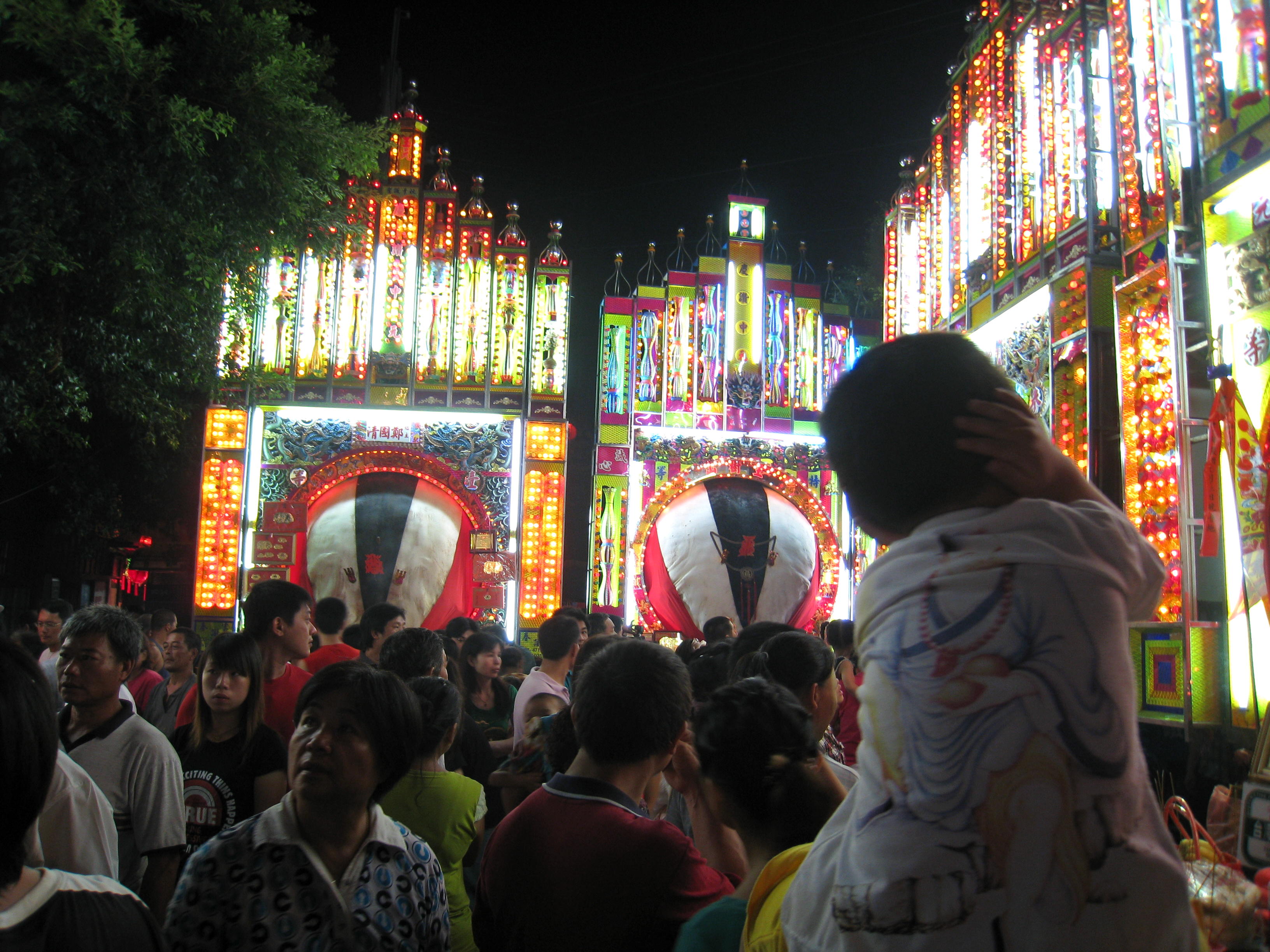
Why are the ghosts hungry? Ancestor spirits of those who died peacefully, without anger or regrets, whose families observed all the proper rituals and care for their gravesites, are not the hungry ghosts. Hungry ghosts, egui in China or gaki in Japan, are thought to be lower, more animalistic spirits, driven by passion or malice or greed, or the souls of those who were murdered or committed suicide or did not receive a proper burial. They are often depicted with bulging, bloodshot eyes and ghoulish features. According to Buddhist lore, which was merged with folk traditions in China and Japan, during the seventh month, the gates of Hell are opened, and hungry ghosts are let loose to roam the land and deal with their unfinished business. It is prudent to propitiate them with food so that they do not bring mischief or misfortune to the household, and they can be driven away with smoke and loud processions. At the end of the Hungry Ghost Festival, ceremonies are held to send the ghosts back to their own realm; at the end of Obon, people gather to float paper boats carrying candles away down a river or on an outgoing tide to symbolize the departure of the restless spirits.
Akira Yamamoto suggests in Japanese Ghosts and Demons: Art of the Supernatural that every culture has its own way of categorizing and making sense of the world—what is human and what is not human, what is good or bad, what are the unseen forces that shape our lives. For most Western cultures, there is a strict division between living and dead; what is dead is unclean and repulsive and must be removed from the arena of everyday life to its own less visible spaces. In her excellent book Ghosts: A Haunted History, Lisa Morton shows how the Western view of ghosts follows this separation. Ghosts in Europe and America are traditionally thought of as terrifying manifestations of the dead that appear in shunned structures like old abandoned houses, often with malevolent intent. Since these tend to be dark, dirty, creaky buildings that we feel uncomfortable entering, perhaps ghosts help make sense of this discomfort.
But in traditional Asian cultures, as well as many Latin American ones, the line between the natural and the supernatural worlds is less of a strict barrier. The more animistic Asian worldview is populated by a broad spectrum of gods, spirits, demons, and monsters. Even rocks, trees, and household items can be imbued with supernatural qualities. According to the Buddhist idea of reincarnation, anyone can return as one of these higher or lower beings, depending on their conduct in this life. Deceased ancestors are still part of the family, memorialized in the home and in the family burial plot; elaborate burial rituals must be observed, and their graves must be cleaned and tended. These spirits are very accessible and are thought of as having many of the same needs as we do—for food, money, entertainment, and ritual. Providing these regularly helps ensure prosperity, while failure can anger the spirits and bring misfortune or illness.

In Mooncakes and Hungry Ghosts: Festivals of China, Carol Stephanchuk and Charles Wong describe China's two yearly festivals of the dead—the Hungry Ghost Festival in summer, but first Qingming, the Festival of Clear Brightness in early April, which honors family spirits. When winter snows melt and flowers start to bloom, families go to the gravesites on the hillsides for their annual spring cleaning, followed by festive picnicking and kite flying. Food is prepared for the ancestors in the home to ensure abundant harvests and good fortune. A more limited food offering is also brought to the burial plot—but it's not safe to bring too much hot food to the graveyard, as it could attract any hungry ghosts that might be lurking around the vicinity too.
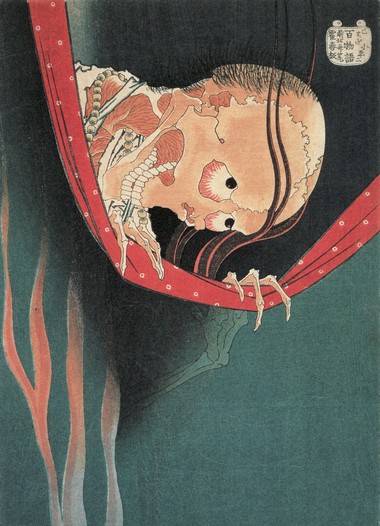
Popular folktales about Mu-Lien, which originated during the Tang Dynasty a few centuries after Indian monks brought Buddhism to China, illustrate the familial nature of ghosts, including hungry ones. Mu-Lien is a Buddhist scholar who decides to check on how his parents are doing in the afterlife. He finds his father happily dwelling in Heaven, but after a long search for his mother, he finally finds her in the lowest depth of Hell, nailed to the ground with spikes. The Buddha intercedes and frees the souls trapped in Hell, but Mu-Lien's mother is reborn as a hungry ghost—she craves food, but it bursts into flame as soon as it touches her lips. The Buddha steps in again and shows Mu-Lien how to ritually prepare food for her on the fifteenth day of the seventh lunar month; he does as instructed, and her soul is released from its torment. Another Mu-Lien story sheds light on the origins of the Hungry Ghost Festival. One day he encounters 500 hungry ghosts, who beg him to help them by asking their families to provide them with food. The families prepare the feast, and the Buddha brings all the ghosts to attend, where their sins are happily expunged. They ascend to Heaven but return annually to honor the Buddha and Mu-Lien.
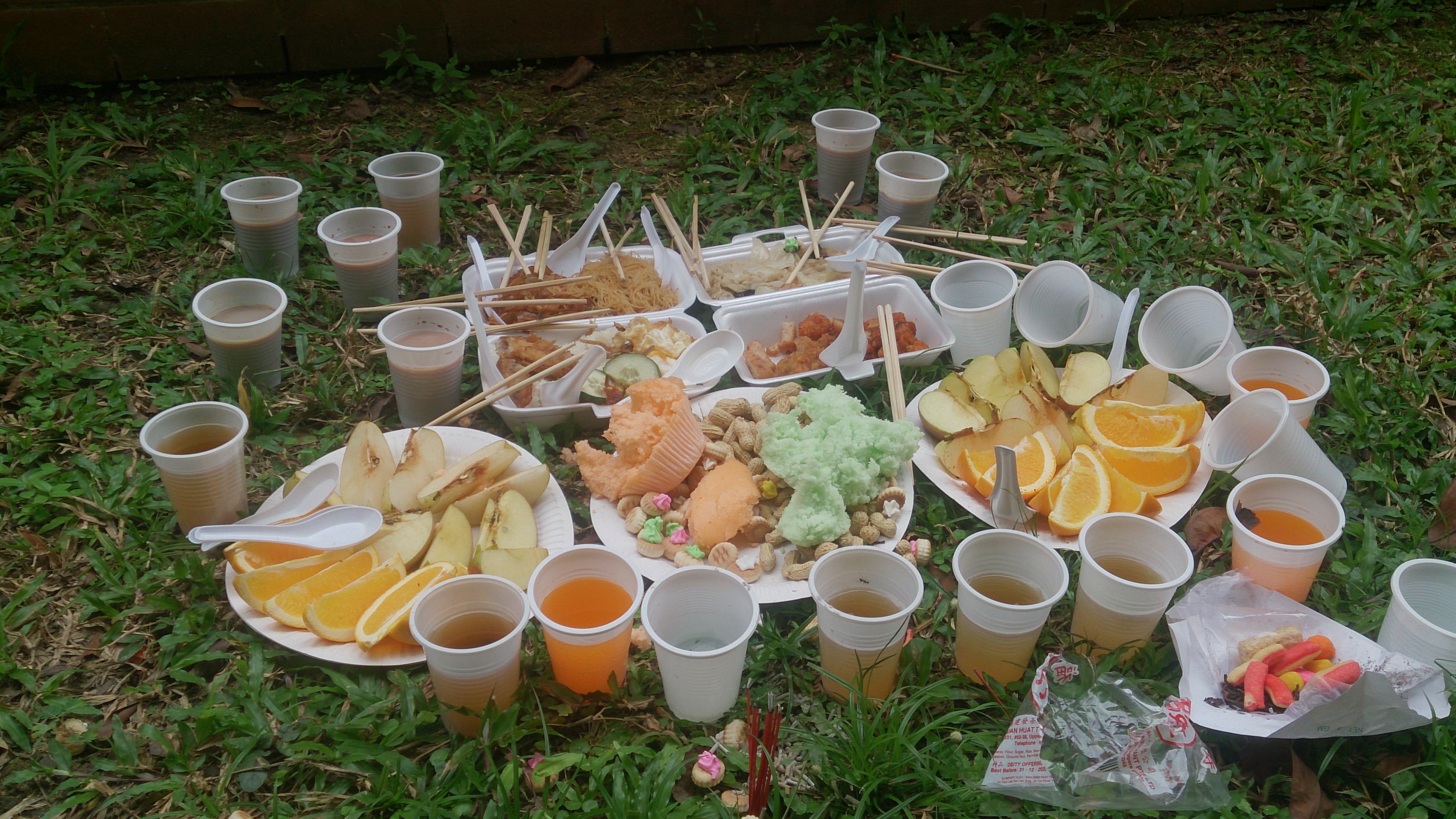
Ghosts show up in two of Japan's classical art forms: kabuki theater and woodblock printing. Kabuki, a highly stylized fusion of theater and traditional dance known for the elaborate makeup and costumes worn by its performers, originated with troupes founded in Kyoto at the beginning of the Edo period in the 17 Century. Although it was wildly popular with audiences, the shogunate tended to frown on it for its bawdy sexuality as well as its satirizing of current events and powerful figures. Ghost stories were popular subjects, and the appearance of the ghost onstage was the perfect opportunity for kabuki producers to pull out all the stops with eerie lighting, hair-raising costumes, and gory special effects.
Woodblock printing goes back many centuries in Japan but was traditionally used to make books and scrolls for religious purposes. When the Tokugawa shogunate united the country, the new seat of power, Edo (later Tokyo), was transformed into a wealthy and growing city. Demand for artwork outstripped the capacity of artists painting by hand, so bold, colorful, large-scale printmaking techniques were developed to serve patrons, including schools, samurai, and government departments. Everybody from the ruling class down to merchants and laborers enjoyed this new prosperity, along with hedonistic pleasures like kabuki, geisha, courtesans, and sumo wrestling—a lifestyle colloquially called ukiyo or 'the floating world.' Ukiyo-e prints ('the art of the floating world'), depicting travel scenes, female beauties, historical events, and even erotica, were in great demand for furnishing the homes of the newly rich. Reflecting the growing interest in ghosts and the supernatural, ukiyo-e artists visualized ancient folktales with boldly imaginative, atmospheric, and often grisly depictions, letting their imaginations run wild to create the equivalent for their audiences of today's blockbuster horror films. Two of the greatest ukiyo-e artists, Katsushika Hokusai (1760–1849) and Utagawa Kuniyoshi (1798–1861) produced what is still some of the spookiest ghost imagery ever seen.

In the 19th century, interest in ghosts reached a peak in Japan. Like the Victorians in the West, many Japanese were drawn to all things exotic, grotesque, and unusual. In 1808 the government actually issued legislation banning the telling of ghost stories, although, of course, this was impossible to enforce. Perhaps the enthusiasm for these stories, featuring supernatural beings returning from the grave to mete out justice to evildoers, was felt to be destabilizing to Japan's feudal system of government, which required subservience to the authority of samurai lords. Similarly, in 1949 Mao's government began suppressing folk customs and religious practices in China, although, in recent decades, traditions like the Hungry Ghost Festival have made a strong comeback.

No writer better captured the Japanese ghost story tradition than Lafcadio Hearn, a fascinating globe-trotting journalist who moved to Japan in 1890, learned the language, married into a samurai family, and changed his name to Koizumi Yakumo. In 1904 he published Kwaidan: Stories and Studies of Strange Things, a classic beloved around the world that has never been out of print since. This consists of his evocative English-language retellings of ghostly folktales that he read in old manuscripts or heard from elderly neighbors, as well as a few unusual experiences of his own—it was later translated back into Japanese and is still widely read. In 1964 it became the basis for Masaki Kobayashi's Kwaidan, one of the most captivating and visually resplendent Japanese horror films. An important forerunner of this book was Pu Songling's Strange Tales from a Chinese Studio, a collection of weird supernatural anecdotes assembled over many decades into manuscripts that the author circulated among his friends. It was only printed for the public many years after his death in 1715. Both Strange Tales and Kwaidan were among Jorge Luis Borges' favorite books.
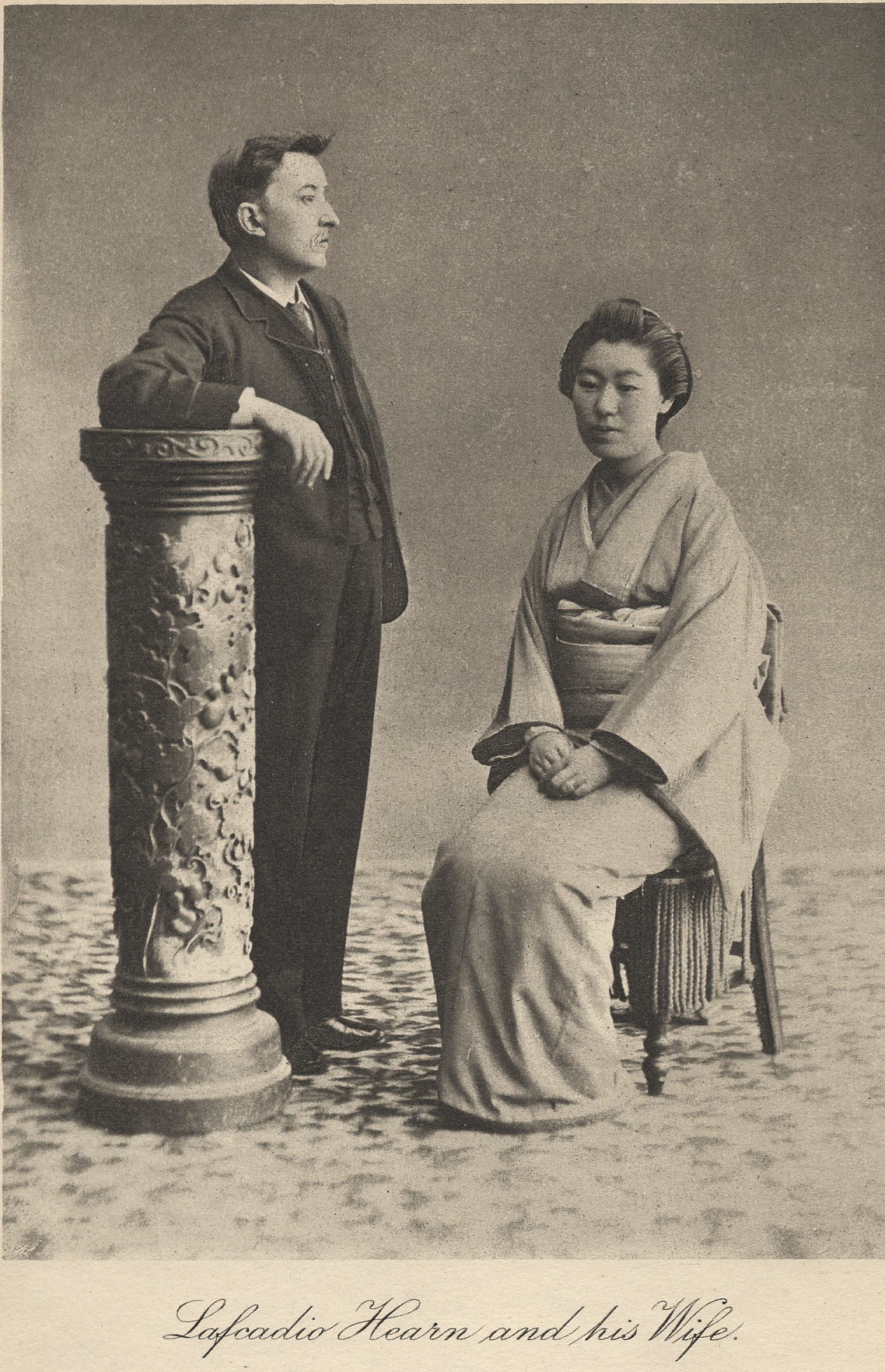
As feminist scholars have noted, female ghosts play an outsized role in Japanese supernatural lore. Probably the most famous Japanese ghostly archetype is the wronged, vengeful female ghost, robed in white with long black scraggly hair falling down over her pale, anguished face, who has come back to torment her faithless lover or the husband who had her killed. To some extent, this reflects the gender roles in traditional Buddhism, in which men tend to be the sages, monks, thinkers, and leaders, and women mainly serve as helpmates. In the original Buddhist worldview, women were considered to be somewhat lower beings, ruled by the passions and incapable of full enlightenment, and thus likelier to wind up as hungry ghosts. Additionally, Japanese culture has always been very patriarchal; women have long been expected to dress and speak demurely, obey their husbands or male relatives, not go out in public unaccompanied, and so forth. From this point of view, stories of hungry female ghosts represent a turning of the tables, with women finally able to speak out and claim vengeance from beyond the grave, violently overthrowing repression at last in a culture intimidated by female sexuality and suffused with male guilt and shame. As Ren Scateni writes in a review of Aoko Matsuda's Where the Wild Ladies Are, a collection of feminist retellings of traditional Japanese folktales:
"Ghosts (yurei), in particular, always draw the short straw. In popular culture, these ghosts are mostly female. Mistreated in life–disfigured, raped, cheated on–the women of these stories (also known as kwaidan) can't embrace a peaceful afterlife and are condemned to cross the earth in the guise of vengeful specters."

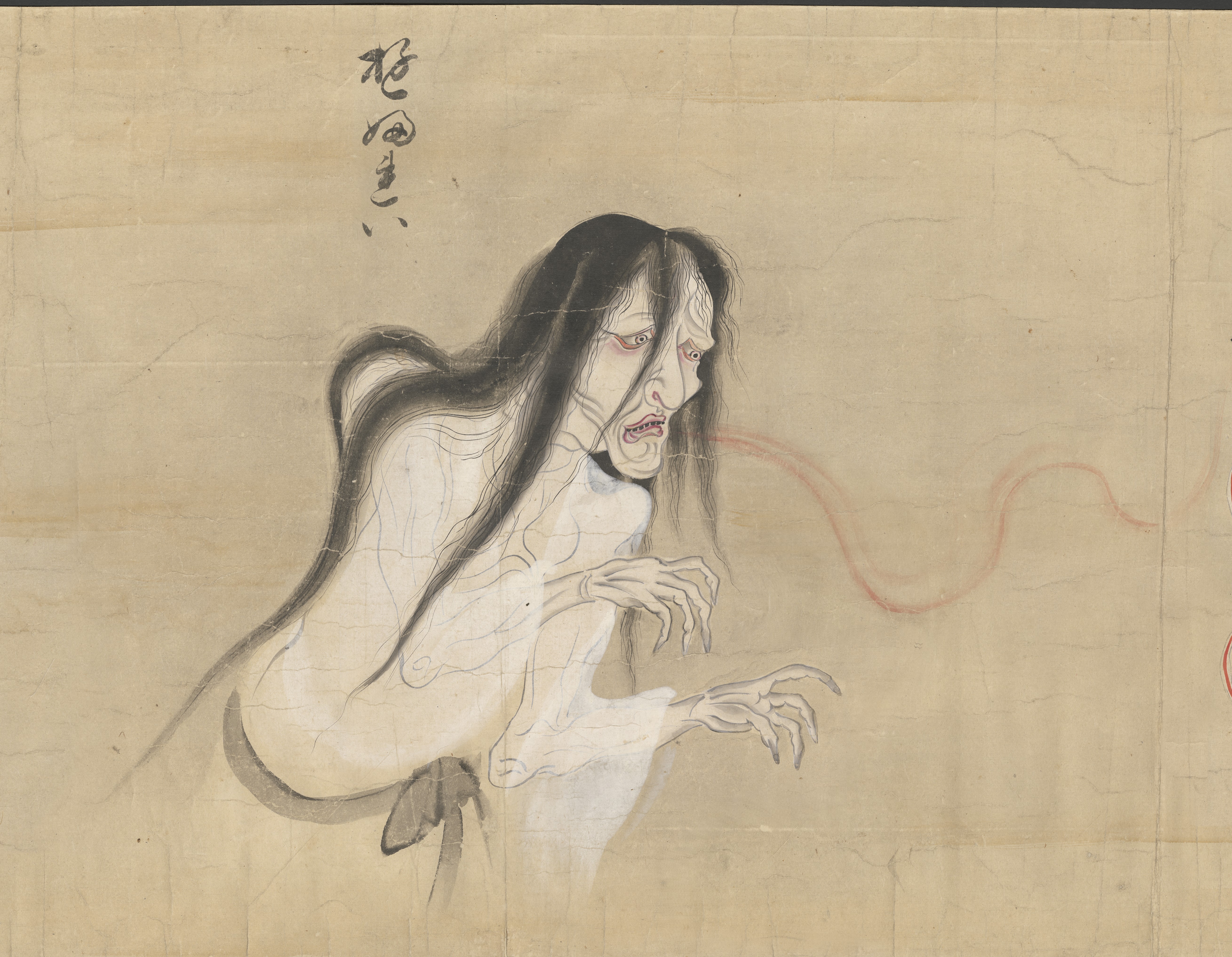
For horror movie fans, the paradigmatic image of this long-haired, white-robed avenging female spirit was the girl climbing inexorably out of the well and through the television screen in Hideo Nakata's 1998 Ringu, remade in America as The Ring in 2002. This psychological chiller was credited with kicking off the J-Horror trend in Japanese filmmaking, which relied on slow-burning tension and creepy atmosphere rather than slasher-style gore in films like Ju-on: The Grudge and Dark Water. As Michael Crandol points out in his study Ghost in the Well: The Hidden History of Horror Films in Japan, the girl climbing out of the well is a callback to the ancient tale of Okiku, a servant girl in a samurai lord's mansion, who was murdered and thrown into a well for breaking one of his ten precious dishes. Every night her ghost would arise from the well to count out the nine remaining plates, shrieking and wailing over the missing tenth and thus driving the guilty samurai to madness.
The most entertaining Japanese horror film I've ever seen is Nobuhiko Obayashi's 1977 psychedelic bubblegum horror-comedy Hausu (House), in which seven young girls have very strange experiences in an obake yashiki haunted house. Obayashi recalled his producer telling him that he was losing money on comprehensible films, so they might as well go ahead with Obayashi's bizarre script, which he developed in collaboration with his 11-year-old daughter Chigumi, trying to capture the wild imagery of her childhood fears. With its floating heads, carnivorous piano, attacking mattresses, and bleeding grandfather clock, it's Buñuel meets Scooby-Doo set to a jaunty rock score, all the way to the climactic battle with the omnipotent cat spirit. It gradually gained traction through the years as a midnight movie and inspired the likes of Sam Raimi and Peter Jackson until Criterion gave it the full reissue treatment in 2010. As the final girl says at the end, her slaughtered posse will be back… when they're hungry.
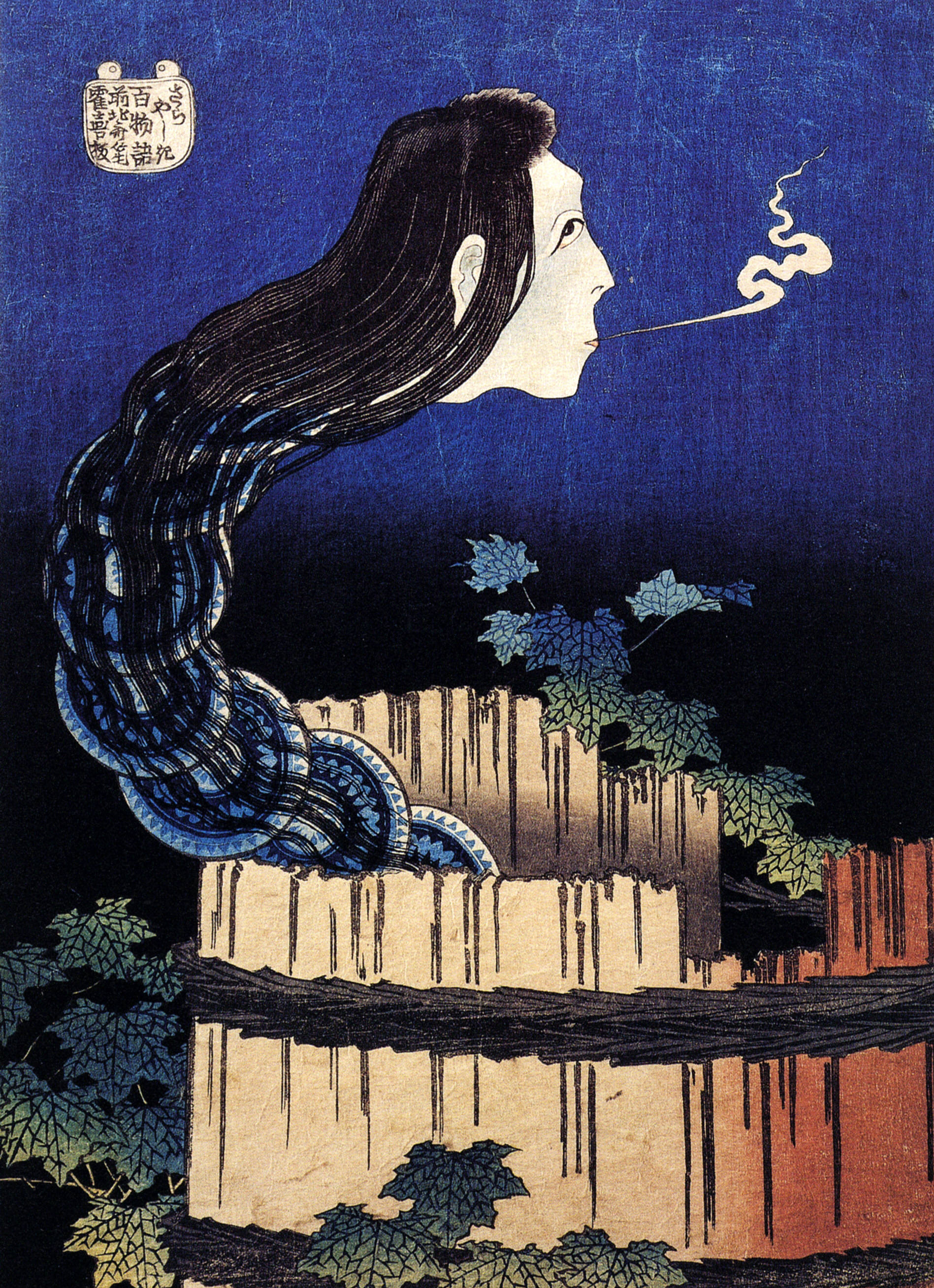
Check out some Hungry Ghost festivities and Obon observances here in the Southland, there are many happening around various local communities! And be sure not to break any of these seven Obon superstitions, compiled by Erika Van't Veld in a post on her GaijinPot blog:
- Do not swim in a river during Obon, or water spirits may take you away (this is sound advice anytime during Japan's summer typhoon season)
- Do not whistle at night, or you may summon snakes or other monsters
- Do not hang your laundry at night; passing spirits may inhabit your wet clothes
- Do not cut your nails at night, or you won't live long enough to be there for your parents on their deathbed
- Don't step on the borders of your tatami floor mats (especially if your ancestors edged them with fabric displaying the family crest, which would mean stepping on the ancestors)
- Don't fall from a persimmon tree (there are lots of superstitions surrounding these, the wood from which was used to mark graves and fuel cremations)
- Don't sleep with your head pointed north, the direction of the Buddha's head on his deathbed (or stick your chopsticks upright in your rice bowl, or wear a kimono with the right side overlapping the left, or anything else that mimics rituals for the dead…)

